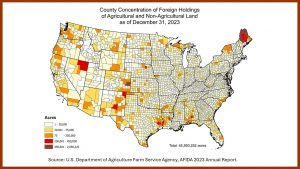
To get there I endured four hours in a mask on a Southwest Airlines flight. The airline attendants continuously reminded all passengers to keep their masks on during the flight, but on my return trip they hinted the mask mandate might soon be lifted in airports and onboard planes. I understand now the mandate has been extended another 30 days.
Salt Lake City is a beautiful city any time of the year, but especially in winter. It is surround by snow covered mountains, and the air is crisp and clean. The day I flew in the overnight temperature was 17 degrees, and barely made it above freezing the next day.
I stayed at the Marriott Hotel City Center. I was delighted to find a full-scale ice skating rink in the plaza just below my sixth floor room.
My client described the audience to which I would be speaking as in an age range of 20 to 45 years, and from working dairies of from as few as 50 cows to as many as 5,000. I was delighted to see so many young couples representing the dairy industry.
Prior to my presentation I had the privilege of sitting in on a couple of very enlightening panel discussions. These people know their stuff. I still haven’t gotten my mind around the concept of robotic milking machines.
It was a pleasure presenting to this young audience. They were very engaging and laughed easily.
After my presentation I joined the group for lunch. When my work is done, I usually like to sit alone as it gives me a chance to unwind. As I was focusing on my lunch, a young couple approached my table and asked if they could join me.
“Sure,” I said.
We shared casual conversation for a bit. I inquired about their families. We especially talked about their children. Then I popped the inevitable question.
“How many cows do y’all milk?” I asked.
“Fifty-six hundred,” the young husband replied. “Actually, my brother-in-law is in charge of the milking. I take care of the cropping end.”
I had heard much talk of alfalfa during the day, so I quizzed him a little further.
“How many acres of alfalfa do you grow,” I asked.
“Six thousand,” he replied.
“SIX THOUSAND!” I repeated. “All irrigated?”
“Yes, sir,” he answered.
“How many times do you cut it,” I asked.
“Four or five times, depending on how it is growing,” he continued.
I must admit I was in awe of his operation. We finished our lunch and our conversation, and I headed back to my room to take a nap.
That night I could not help but think about 5,600 dairy cows and 6,000 acres of alfalfa. And I told myself:
“Jack, you are a long way away from a time when a farmer hand-milked a few cows and sold Grade B milk to a local cheese factory – a time when a two-ton milk truck with a tall, box-bed ran a route every morning, and a young man with arms like jack hammers hoisted up 10-gallon milk cans like they weighed nothing.”
I’m glad I knew of that time. But I am also glad I met some very fine young people who are providing milk for our nation in a way I once could not have imagined.
Jack McCall is a motivational humorist, Southern storyteller and author. A native Middle Tennessean, he is recognized on the national stage as a “Certified Speaking Professional.” He can be reached at jack@jackmccall.com Copyright 2022 by Jack McCall.























